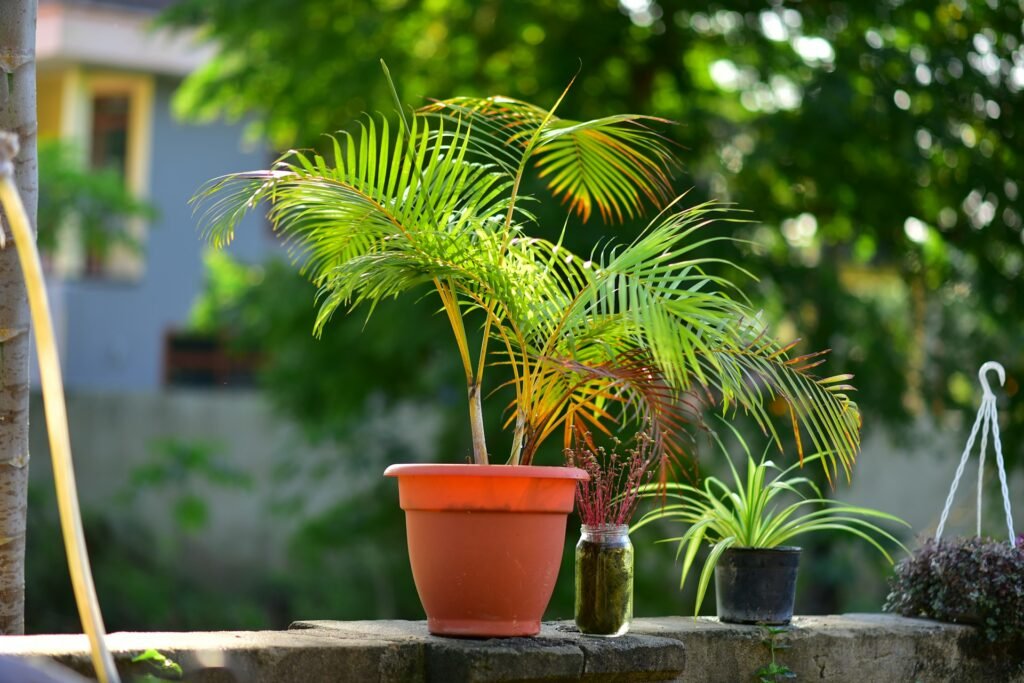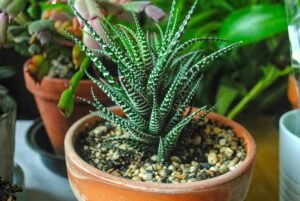Since dense foggy weather without sunlight disrupts the overall health and growth of plants, gradually introducing plants to outdoor sunlight and fresh air at the beginning of summer is very important for reviving them . Moreover, Research shows that plants need a little extra care in the summer.
However, If you move indoor plants outside without following the correct procedure and having no experience, like me, the chances of your favorite plant getting sunburned or attacked by pests increase. As the temperature changes, the plant grows many new leaves and the stems become stronger, which helps the plant bloom again.
By following the methods in this guide, you can safely move your favorite indoor plants outside in summer without facing any damage, which will help them grow in a healthy manner. On the other hand, throughout your plant’s journey from indoor to outdoor environments, a small balcony or open space will experience temperature changes over time and the following guidelines must be applied.
Do I Need to Move Indoor Plants Outside in Summer ?
Yes, If you want to see your favorite plant with large, strong leaves, colorful flowers, and pest-free, you must move the plants outside to a well-ventilated environment where, in the presence of sunlight, a complete photosynthesis process will be completed, which is essential for the development of healthy leaves. Let’s discuss some important benefits :
- Most plants lose their vigor when exposed to the stagnant air of an indoor environment for a long time and many look a bit faded, but the fresh air and changing weather outside bring the plants back to life. In this case, plants like Monstera and Philodendron grow leaves very quickly.
- Sometimes, the process of photosynthesis within plants is interrupted, causing the plants to flower again, but the changing seasonal weather outside helps the plants to flower again. Moreover, a plant reaches its full potential only when it is filled with vine leaves and flowers of various colors.
- In the open environment, some beneficial insects like bees and ladybugs play a crucial role in controlling harmful pests on plants, which protects plants from various diseases. Along with this, the need for pesticides on plants indoors is reduced.
However, You must take some precautions when moving your hobby plants to an outdoor environment, which will make the plants healthier due to the changing seasons outside.
Which Plants Can Handle Outdoor in Summer ?
Just as many small trees in a forest survive for a long time without sunlight, hidden from the sight of many large trees, many plants survive for a long time indoors, but many die instantly when moved outdoors. Let’s see which plants can survive the fight against sunlight with the right methods and which ones lose :
1. Plants that Should Transition Outdoor.
✔ Plants that Tolerate Low Light – If the space designated for outdoor plants is shaded or partially shaded, some plants like Radiator plants, Peace lilies, and Prayer plants grow very quickly and can adapt to the extra airflow.
✔ Plants that are edible and herbs – Many of us plant medicinal or edible plants like Cilantro, Oregano and Aloe vera in the empty space of the kitchen to meet the needs of our daily life. On the other hand, when these plants are moved outside, they quickly adapt. If you want to know more about kitchen plants, follow the detailed Guideline .
✔ Various tropical plants – There are some tropical plants that prefer to stay outside as long as they can get direct sun exposure, including Orchids, Sansevieria, and Areca palm.
2. Plants that Should Stay Indoor.
❌ Bird of Paradise -Although they look like tropical plants, they can survive indoors and bloom for a long time.
❌ Ivy -These plants can survive indoors in indirect light, but it is best not to add additional water until the soil at their base dries out.
❌ Lucky Bamboo – These plants perform very well indoors if watered regularly, meaning they don’t need much direct sunlight outside.
How to Transition Indoor Plants Outdoors without harming .
In the summer season, Just as It is important to meet indoor plants with direct sunlight to promote plant growth, freshness, and protection from pests, there is also a high chance that the plant will die from sunburn if the correct procedure is not followed. Designating a spot for plants that gets both sunlight and shade can be a golden opportunity to acclimate them to the outside weather. Here’s how to do it properly without any harm.
1. The process of acclimation .
Although plants thrive in a closed environment indoors with stable temperatures and light, the changing weather outside can be very damaging to plants. Follow the steps below for balanced transition :
- Choose a shady spot – Initially, move the plants to a shaded area for 1-2 hours. Be sure to keep the plants out of direct sunlight and keep an eye on them during busy periods.
- First introduce with morning sunlight – After a few days, gradually move the plants to gentle morning sunlight and place them in a shaded area away from the hot midday sun and intense afternoon rays.
- Try to increase exposure gradually – Increase the time the plants are moved outside by 1-2 hours each day and expose them to bright light periodically.
- Start fully transition after 7 days – Add water when the soil on the top of the plant is dry and after at least 7 days of observation, prepare the plants for complete transfer.
2. When to Move Plants Outdoor ?
- Count Overnight Temperature – Because tropical plants are more sensitive to cold weather, outdoor temperatures should be consistently above 50°F (10°C) before moving plants outside, which is ideal for the plant.
- Measure the Lowest Temperature – Avoid moving plants outside during times when there may be a sudden increase in snowfall. The safest time is from late spring to early summer.
3. Safe Plants from Severe and Harsh Weather.
- Ignore strong winds for plants – Openly, strong wind can damage the plant’s tender leaves and branches, and the soil on the planet’s surface is more likely to dry out quickly, so move it to a safe spot in the corner.
- Monitor temperature fluctuations – Keep an eye on the weather forecast and move plants safely away from unexpected temperatures, storms, and heavy snowfall.
- Wear breathable clothing or an umbrella – If necessary, cover the plants with a thin net or umbrella to allow air to circulate and prevent the plants from being attacked by harmful insects.
4. Careful about Stress Signs & Instant Solved.
- If the leaves of the plant suddenly turn white, yellow or brown, it is likely due to excessive sunlight. Therefore, without delay, move the plant to a shady place and gradually try to bring it back into the sun.
- If the plant appears to be drooping or overexposed, immediately monitor the soil moisture and water as needed.
- Unnecessary leaf shedding is completely normal for plants, but if excessive leaf shedding occurs, it is likely due to a change in the outside weather, and you should try to relocate the plant quickly.
When to Bring Plants Back Indoors.
At the end of summer, an adverse change in the weather can be observed which can disrupt the normal life of the plants. Therefore, to protect the plants from such damage, it is safe for them to move them indoors according to the correct procedure.
1. Best Time to Bring Plants Indoor.
- You must pay close attention to nighttime temperatures and move plants indoors when temperatures begin to drop below 50°F (10°C). Otherwise, the sudden extreme cold can damage sensitive parts of the plant.
- Monitoring seasonal changes, i.e. shorter days and longer nights, indicates that your plants need to be moved or there is a possibility of major damage to the plants due to weather changes.
2. Best Way to Bring Plants Indoor Without Harm.
Step 01 – Monitor the plant’s stems or leaves closely to see if they are attacked by harmful insects. If necessary, wipe the leaves with water or neem oil.
Step 02 – Prune away dead and damaged leaves or stems and carefully wipe away any dust from the plant with a clean, damp cloth.
Step 03 – Acquaint plants with the indoor environment for a few days or hours before moving them completely indoors, then slowly move them indoors for the long term.
Step 04 – Plants require less water in humid indoor environments than in dry outdoor environments. Therefore, water as needed after checking the moisture content of the surface soil.
Move your plants indoors and help them stay healthy throughout the winter by following the steps above carefully.
Finally, Although various steps must be carried out with great care and routine to ensure the health, flowering, and normal growth of the plants, the fresh and enchanting appearance of the plants makes us forget all our troubles.
Let’s help plants live their natural lives by Moving Indoor Plants Outside in the Summer as the seasons change.











Pingback: The Complete Guide – How to Care for Aloe Vera Plant.